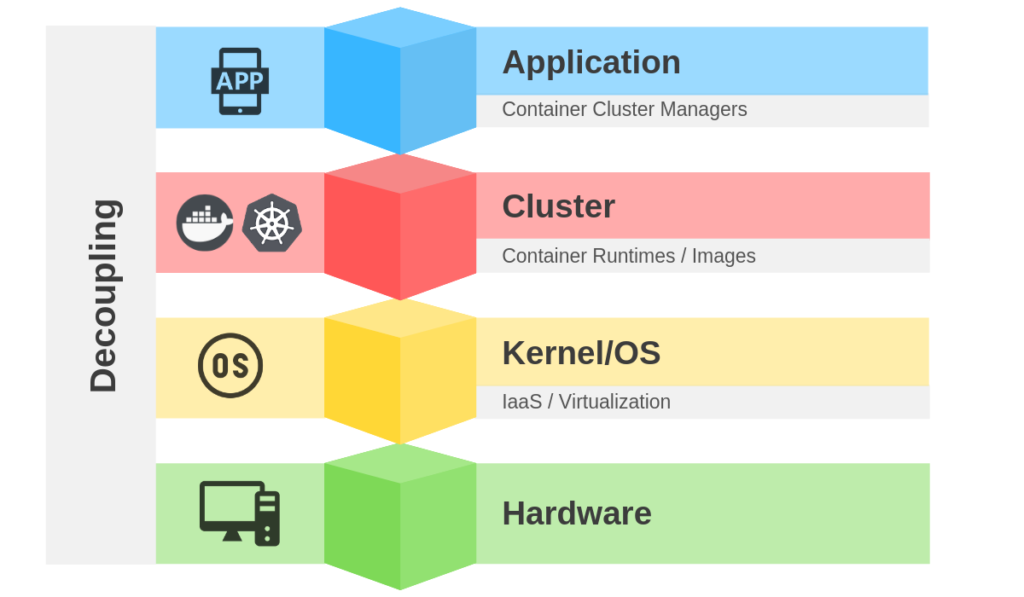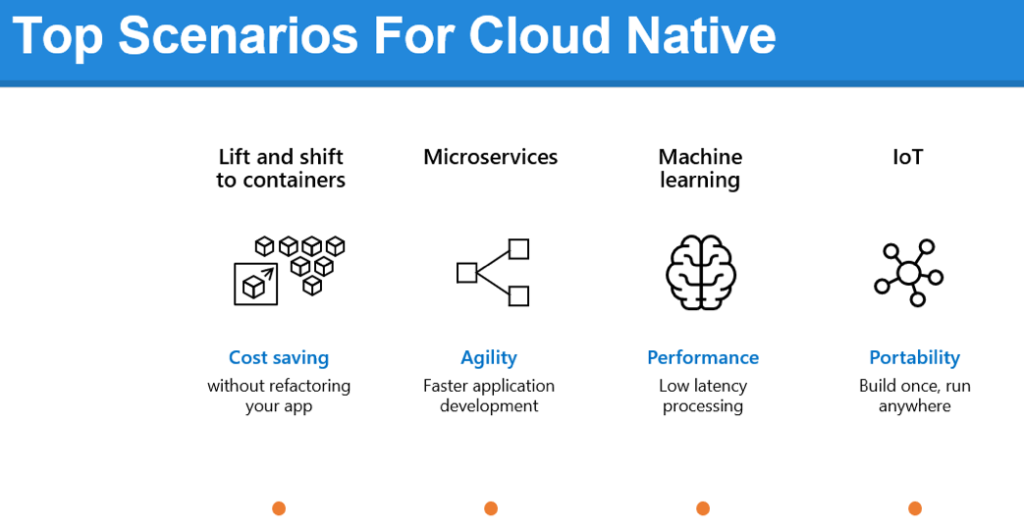PaaS & Cloud-Native Technologies
If you have worked with Azure for a while, you’re aware of the benefits of PaaS, such as the ability to have the cloud provider manage the underlying storage and compute infrastructure so you don’t have to worry about things like patching, hardware failures, and capacity management. Another important benefit of PaaS is the rich ecosystem of value-add services like database, identity, and monitoring as a service that can help reduce time to market.
So if PaaS is so cool, why are cloud-native technologies like Kubernetes and Prometheus all the rage these days? In fact, not just Kubernetes and Prometheus, there is a groundswell of related cloud-native projects. Just visit the cloud-native landscape to see for yourself.
Key Benefits of Cloud-Native Architecture
Here are ten reasons why cloud-native architecture is getting so much attention:
- Application as a first-class construct — Rather than speak in terms of VMs, storage, firewall rules, etc. cloud-native is about application-specific constructs. Whether it is a Helm chart that defines the blueprint of your application or a service mesh configuration that defines the network in application-specific terms.
- Portability — Applications can run on any CNCF certified clouds and on-premises and edge devices. The API surface is exactly the same.
- Cost efficiency — By densely packing the application components (or containers) on the underlying cluster, the cost of running an application is significantly more efficient.
- Extensibility model — Standards-based extensibility model allows you to tap into innovations offered by the cloud provider of your choice. For instance, using the service catalog and open service broker for Azure, you can package a Kubernetes application with a service like Cosmos DB.
- Language agnostic — Cloud-native architecture can support a wide variety of languages and frameworks including .NET, Java, Node etc.
- Scale your ops teams — Because the underlying infrastructure is decoupled from the applications, there is greater consistency for lower levels of your infrastructure. This allows your ops team to scale much more efficiently.
- Consistent and “decoupled” — In addition to greater consistency at the lower levels of infrastructure, applications developers are exposed to a consistent set of constructs for deploying their applications. For example, Pod, Service Deployment and Job. These constructs remain the same across cloud, on-premises and edge environments. Furthermore, these constructs also help decouple the developers from the underlying layers (Cluster, Kernel and Hardware layers ) shown in the diagram below.

- Declarative Model – Kubernetes, Istio, and other projects are based on a declarative, configuration-based model that support self-healing. This means that any deviation from the “desired state” is automatically “healed” by the underlying system. Declarative models reduce the need for imperative automation scripts that can be expensive to develop and maintain.
- Community momentum – As stated earlier, the community momentum behind CNCF is unprecedented. Kubernetes is #1 open source project in terms of contributions. In addition to Kubernetes and Prometheus, there are close to 500 projects that have collectively attracted over $5 B of venture funding! In the latest survey, (August 2018), the use of cloud-native technologies in production has gone up by 200% since Dec 2017.
- Ticket to DevOps 2.0 – Cloud-native combines the well-recognized benefits of what is being termed as “DevOps 2.0” that combines hermetically sealed and immutable container images, microservices and continuous deployment. Please refer to the excellent book by Victor Farcic.
Now that we understand the key benefits of cloud-native technologies, let us compare it to a traditional PaaS offering:
| Attribute | Tradition PaaS | Cloud-Native as a Service |
| Portability | Limited | Advanced |
| Application as a first-class construct | Limited (application construct limited to the specific PaaS service) | Advanced construct including Helm, network and security policies |
| Managed offering | Mature (fully managed) | Maturing (some aspects of the cluster management currently require attention) |
| Stateful applications | Advanced capabilities offered by the database as service offerings | Some cloud-native support for stateful applications (However, cloud-native applications can be integrated with PaaS database offerings through the service catalog) |
| Extensibility | Limited | Advanced (extensibility includes Container Network Interface, Container Runtime Interface) |
Azure & CNCF
Fortunately, Microsoft has been a strong supporter of CNCF, as they joined CNCF back in 2017 as a platinum member. Since then, they have made significant investments in a CNCF-compliant offering in the form of Azure Kubernetes Service (AKS). AKS combines the aforementioned benefits of a cloud-native computing with a fully managed offering – think of AKS as a PaaS solution that is also CNCF compliant.
Additionally, AKS addresses enterprise requirements such as compliance standards, integration with capabilities like Azure AD, Key Vault, Azure Files etc. Finally, offerings like Azure Dev Spaces and Azure DevOps greatly enhance the CI/ CD experience in working with cloud-native applications. I will be remiss not to talk about VS Code extension for Kubernetes that also brings a useful tooling to the mix.
Cloud-Native Use Cases
Here are few key use cases for cloud-native applications. Microservices are something you would expect, of course. Customers are also being used to run Apache Spark on AKS. There is also thinking around managing IoT Edge deployments right from within the Kubernetes environment. Finally, “Lift and shift to containers” – this use case is getting a lot of attention from customers as the preferred route for moving on-premises applications to the cloud. Please refer to our recent blog post on this very topic “A “Modernize-by-Shifting” App Modernization Approach” for more details!

FREE HALF DAY SESSION: APP MODERNIZATION APPROACHES & BEST PRACTICES
Transform your business into a modern enterprise that engages customers, supports innovation, and has a competitive advantage, all while cutting costs with cloud-based app modernization.






